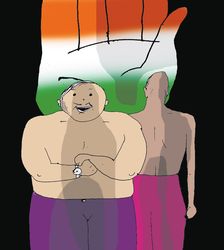Remember how Hillary Clinton became US secretary of state? She challenged Barack Obama’s bid for the Democratic ticket in the 2008 presidential poll, and lost. But when he became president, Obama chose her to be his secretary of state. That’s grace.
Mallikarjun Kharge has shown similar grace. Shashi Tharoor had put up a passionate and principled challenge against his bid for the Congress presidency earlier this year. Tharoor failed, but Kharge has now inducted the younger challenger into his core team, the working committee.
That’s good politics too, to have your critics inside your camp rather than outside. Good old Lyndon Johnson explained the rationale a bit crudely when asked why he was keeping troublesome fellows like Edgar Hoover, his notorious FBI chief who had a dossier on everyone, in his team: “I’d much rather have that fellow inside my tent pissing out than outside my tent pissing in”. That’s common sense, too.
There is lesson in the Tharoor episode for the younger ones too in the Congress―that you can rise in stature by challenging the authority rather than by acquiescing to authority. Another who did so and has prevailed is Sachin. The young Pilot had been playing a dangerous game of brinkmanship, but has finally got more than his due by getting inducted into the working committee. Sachin apparently inherited the challenger trait from his father, Rajesh Pilot, who had run against Sitaram Kesri for party presidency in 1997 and lost, yet survived and prevailed.
Kharge has been as graceful as possible. He has found room for almost every group and section in his team―forwards and backwards, scheduled castes and scheduled tribes, majority and minorities, loyalists and dissidents, men and women, elders and youth―much like how Noah picked passengers for his ark.
All the same, by trying to be even-handed, hasn’t Kharge overlooked one factor―the electoral ballast that each one carries? The core team―minus the invitees―is packed with Delhi leaders, starting with three from the same exalted family. No harm! The Congress can’t do without the family. But what about the rest, starting from Abhishek Singhvi, Ambika Soni and Anand Sharma till the grand old Manmohan Singh? Indeed, most are wise men worth more than their weight in votes, yet many of them lack the earthy touch of dusty politics. Most of them are drawing-room busybodies of Lutyens’s Delhi, save for an odd Gaikhangam Gangmei, Tamradhwaj Sahu, Gourav Gogoi, Charanjit Singh Channi or Lalthanhawla. Even they, despite their roots in their political earth, can hardly be called titans in their turfs.
Not that the Congress has no titans. The party has native netas like Bhupinder Hooda, Siddaramaiah, D.K. Shivakumar, Ashok Gehlot and Bhupesh Baghel, but they had to be kept out because of the one-man one-post rule.
Team Modi presents a picture in contrast. Once lorded over by capital creatures like A.B. Vajpayee, L.K. Advani, Arun Jaitley and Sushma Swaraj, the BJP has over the years packed its top rungs with regional leaders. Take their 10-member parliamentary board headed by J.P. Nadda who still has his roots spread on the Himachal hills. The list starts downwards from Narendra Modi and Amit Shah, both still strongmen in Gujarat, to men like Rajnath Singh, Satyanarayan Jatiya and B.S. Yediyurappa, all drawing their political sustenance through their roots in one region or another.
The Congress has brains; it badly needs some brawn now, so that it does not meet the CPI’s fate―a party with fine leaders but few followers.
prasannan@theweek.in


